A key component of meeting President John F. Kennedy’s goal of landing a man on the Moon before the end of the 1960s involved the development of the Saturn V rocket. The rocket’s large size required the construction of special facilities to test its various engines and stages. On Oct. 25, 1961, NASA announced the decision to build the Mississippi Test Operations (MTO), now NASA’s Stennis Space Center, in Hancock County, Mississippi. Engineers at the facility tested the first Saturn V rocket stage on April 23, 1966. The facility tested all subsequent Saturn V first and second stages as well as space shuttle main engines and, most recently, engines and the core stage for the Space Launch System as part of the Artemis Program.
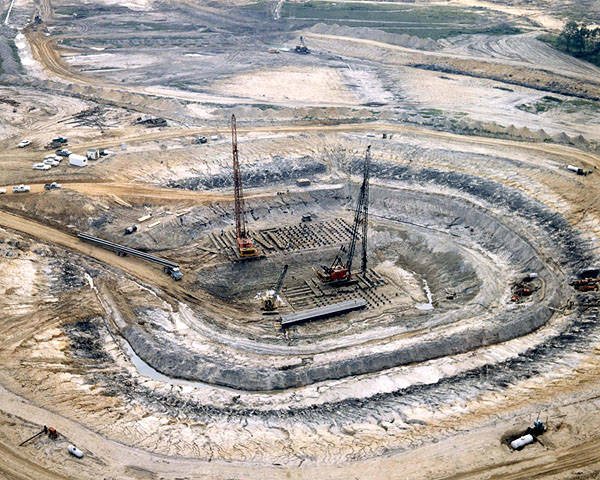
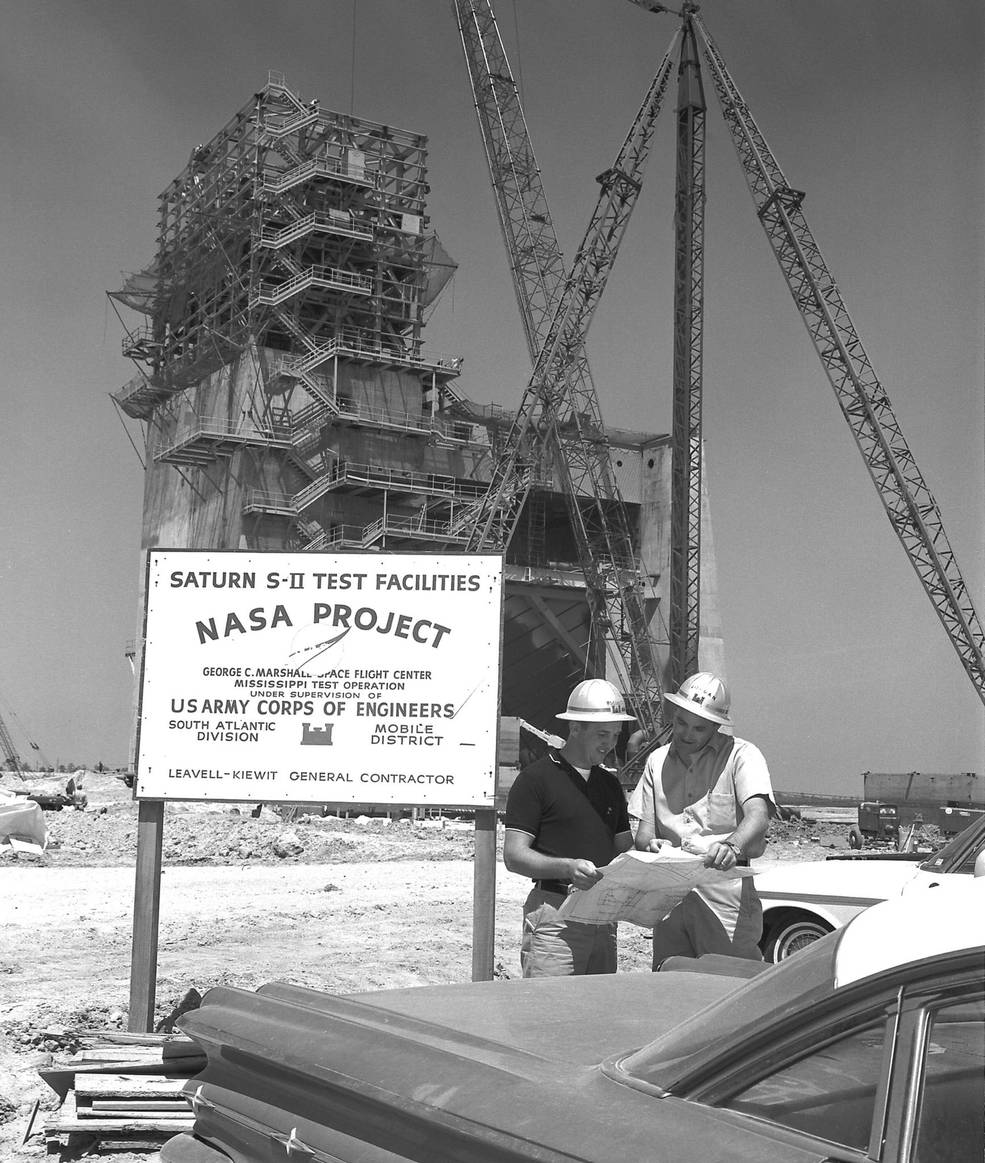
Left: Early construction in 1964 of the A-2 test stand at the Mississippi Test Operations, now NASA’s Stennis Space Center, in Hancock County, Mississippi. Right: Construction of the A-2 test stand nearing completion in April 1965.
In the late 1960s and early 1970s, there was a saying, “If you want to go to the Moon, you first have to go through Hancock County, Mississippi,” referring to the fact that Saturn V first and second stages were tested there before being barged to NASA’s Kennedy Space Center (KSC) in Florida for launch on lunar missions. In October 1961, NASA selected the site in southern Mississippi to conduct static test firings of the Moon rocket’s components to certify them to safely launch astronauts on lunar missions. At the time, it was the largest construction project in the state and the second largest in the United States. The site offered the advantage of easy access to water, essential since the large rocket stages could only practically be transported by barge. On Oct. 17, 1965, the first Saturn V rocket element, a test version of a second stage called S-II-T/D, arrived at what was now called the Mississippi Test Facility (MTF) and made a part of NASA’s Marshall Space Flight Center (MSFC) in Huntsville, Alabama, after a 16-day barge trip from its manufacturer, North American Aviation in Seal Beach, California. Two days later, ground crews mounted the stage in the MTF’s A-2 test stand. After several months of checkout, on April 23, 1966, engineers conducted the first static test of a Saturn rocket stage at the MTF with a 15-second firing of S-II-T/D. At the time, the Saturn V’s S-II second stage was the largest rocket component to use liquid hydrogen and liquid oxygen, its five J-2 engines generating one million pounds of thrust. On its fourth static test on May 20, the stage completed a full-duration 354.5-second firing and met all test objectives. Eight days later, the stage ruptured during a pressure test caused by an over pressurization due to a procedural error.
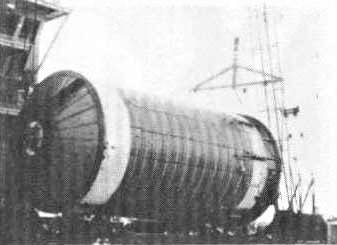
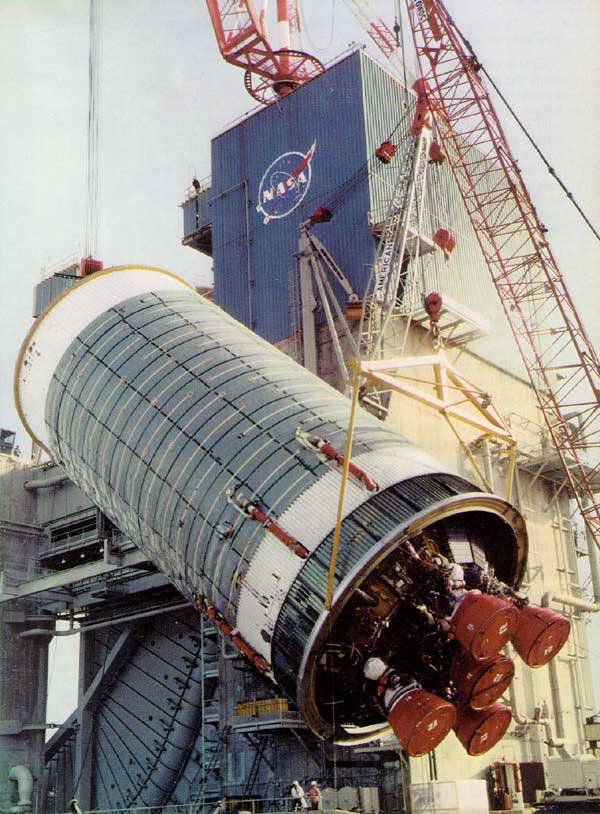
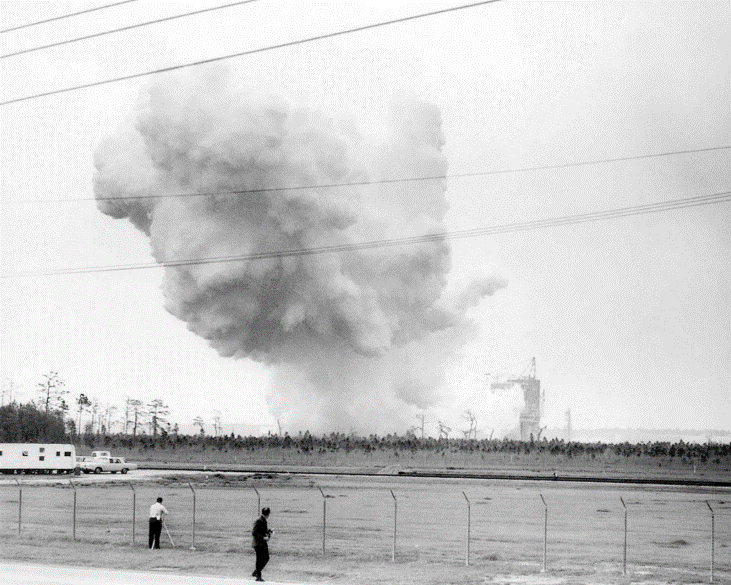
Left: The arrival of the first Saturn V rocket stage, a test version of a second stage called S-II-T/D, for testing at the Mississippi Test Facility (MTF), now NASA’s Stennis Space Center. Middle: Ground crews hoist the S-II-T/D rocket stage into the A-2 test stand. Right: The first static firing of the S-II-T/D, the first rocket stage tested at the MTF.
The first Saturn V rocket second stage destined to fly, called S-II-1, arrived at MTF on Aug. 13, 1966, after completing its 4,000-mile barge voyage from Seal Beach, California. Workmen installed it into the A-2 test stand for inspection and checkout. On Dec. 30, technicians successfully conducted a six-minute test firing and following a brief inspection, on Jan. 16, 1967, placed it on a barge headed for KSC, where it arrived five days later. On June 18, workers at KSC’s Vehicle Assembly Building stacked the S-II stage atop the S-IC first stage, with the fully assembled Saturn V rolling out to Launch Pad 39A on Aug. 26. The stage as well as the rest of the rocket and the spacecraft proved itself during the successful Apollo 4 mission on Nov. 9, 1967, the first uncrewed flight of a Saturn V. All subsequent S-II stages were flight certified during test firings at MTF, the last one occurring on Nov. 4, 1970, for the Saturn V of the cancelled Apollo 19 mission. It was the last Saturn stage tested at MTF.
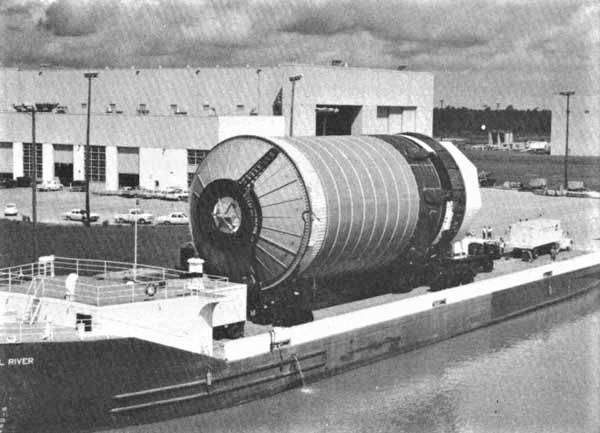
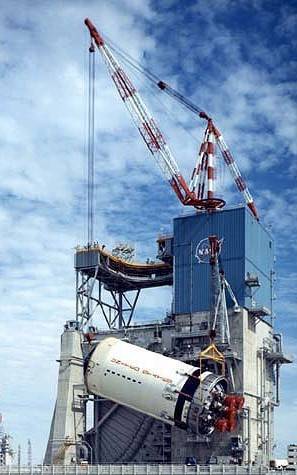
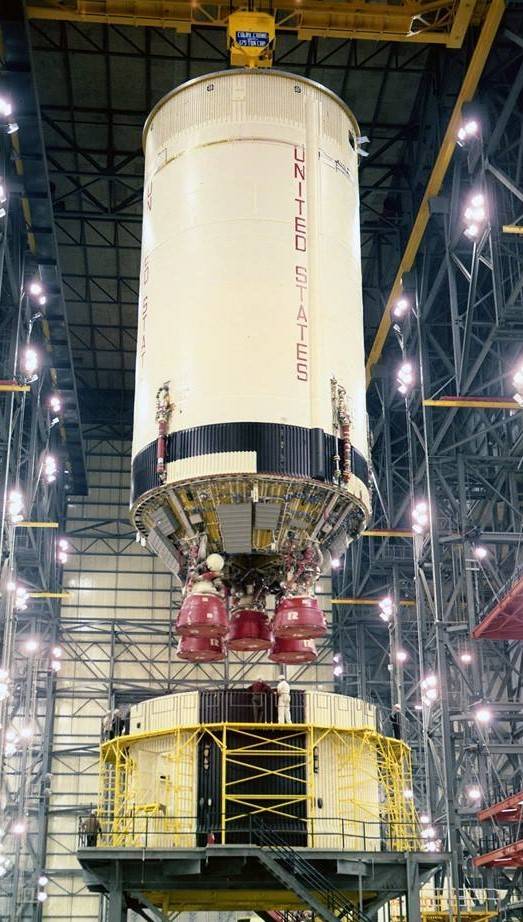
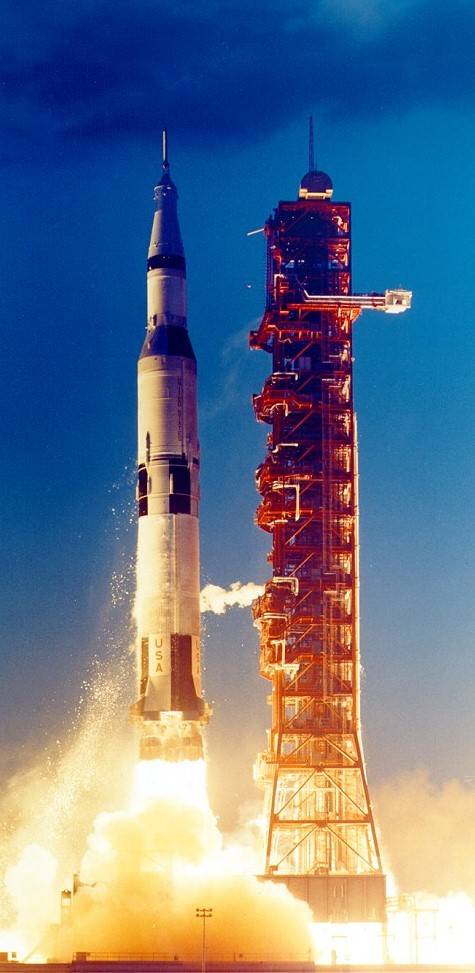
Left: The arrival by barge of the first flight stage (S-II-1), the second stage for the first Saturn V launch vehicle at the Mississippi Test Facility (MTF), now NASA’s Stennis Space Center. Middle left: Ground crews hoist an S-II second stage into the A-2 test stand at MTF. Middle right: Stacking of the S-II-1 stage for the Apollo 4 mission in the Vehicle Assembly Building at NASA’s Kennedy Space Center (KSC). Right: Launch of Apollo 4 from Launch Pad 39A at KSC.
The MTF also included a facility for testing the Saturn V’s S-IC first stage, the much larger B-2 stand, completed in February 1967. The first static test firings of the S-IC stages took place at MSFC, but due to the tremendous noise of the stage’s five F-1 engines, generating 7.5 million pounds of thrusts, after a Nov. 15, 1966 firing, all subsequent tests took place at MTF. On Oct. 17, 1966, ground crews shipped the S-IC-T test booster by barge from MSFC to MTF, where it arrived six days later. Technicians placed it into the B-2 test stand on Dec. 17. Following an extensive checkout of the B-2 test stand, on March 3, 1967, workers successfully fired the S-IC-T stage for 15 seconds. This S-IC-T test, the first firing of a Saturn V first stage at MTF, proved the total compatibility of stage, mechanical support equipment, and test facilities. After two more firings of the test stage, ground crews shipped it back to MSFC on March 24. Today, that stage is part of the rocket displayed at the KSC Saturn V Center. The first Saturn V booster to fly, the S-IC-4 stage that launched Apollo 9, arrived at MTF on April 4, 1967, and technicians successfully completed an acceptance firing on May 16. All subsequent Saturn V boosters were tested at MTF, with the last S-IC acceptance firing occurring in October 1970 for the cancelled Apollo 19 mission.
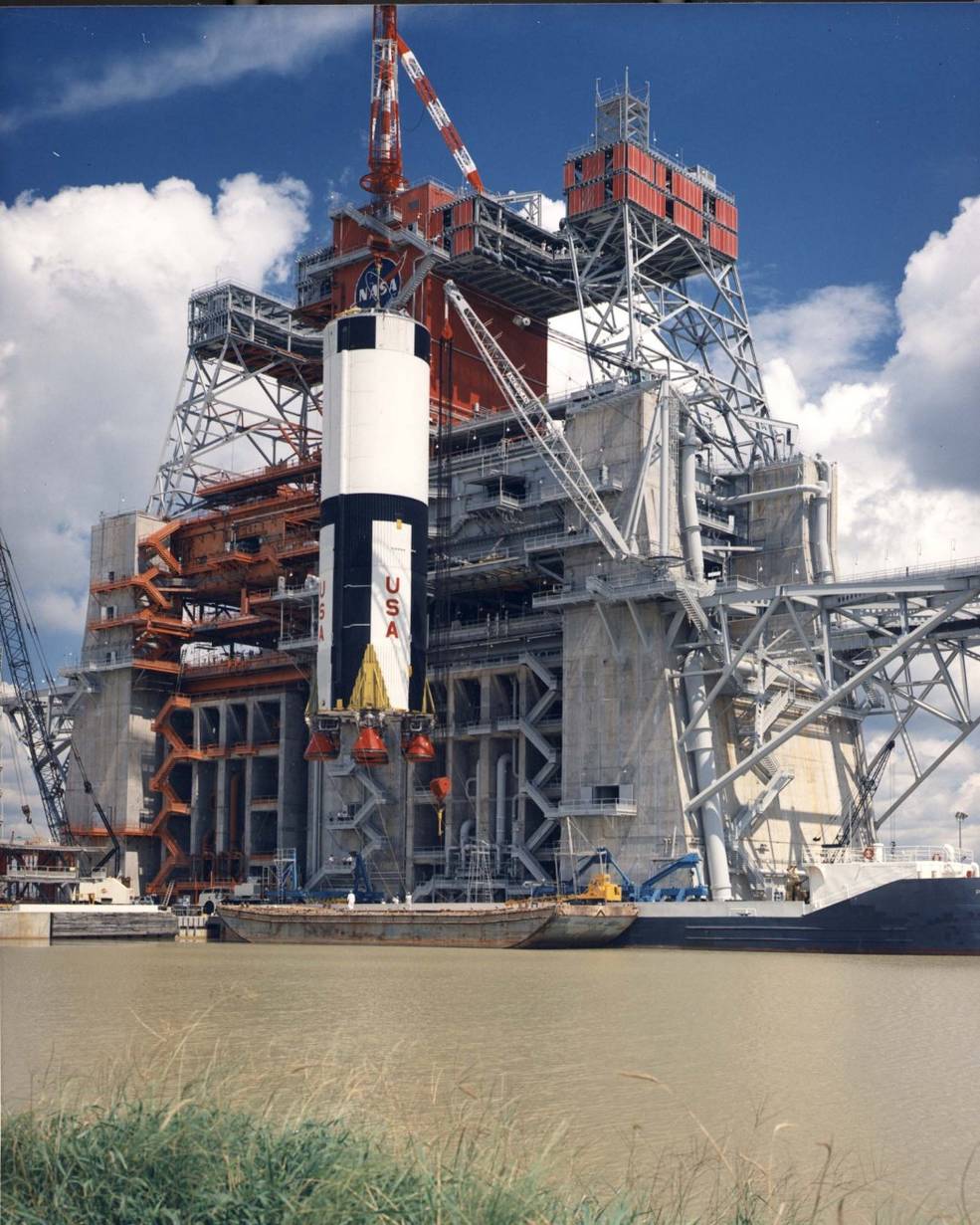
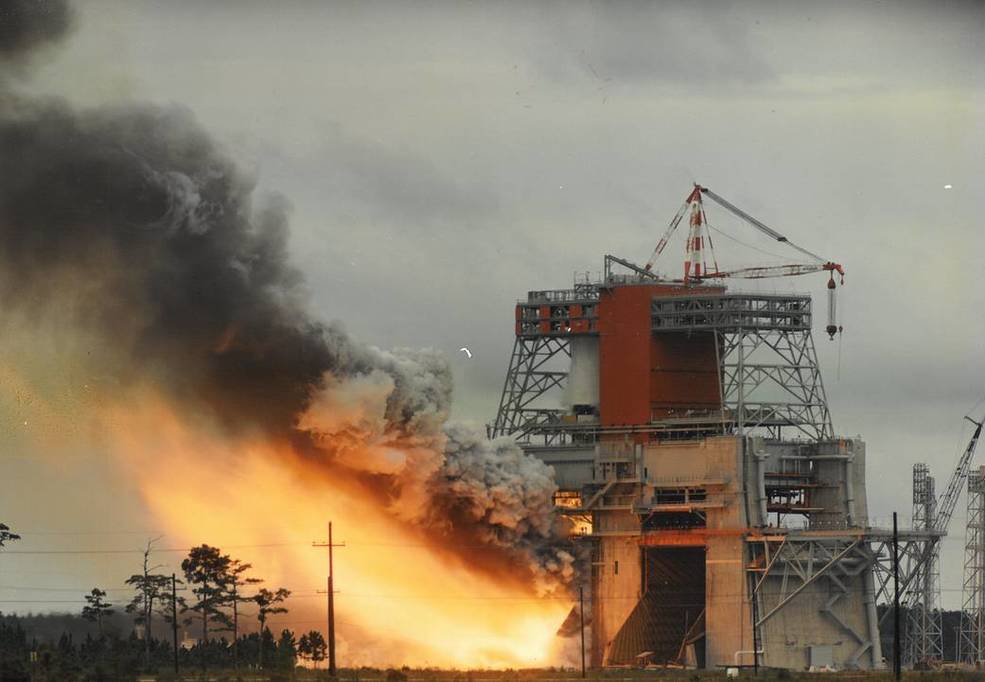
Left: Ground crews placing the S-IC-T Saturn V test stage in the B-2 test stand. Right: The first stage for the Apollo 9 Saturn V during its acceptance firing.
Following the end of the Apollo and Skylab programs, the MTF experienced a short hiatus in engine and stage testing, and in 1974 NASA renamed it the National Space Transportation Laboratory (NSTL), reporting to NASA Headquarters in Washington, D.C. Ground crews modified the test stands for upcoming static firings of space shuttle main engines (SSMEs), beginning with the first brief test in the A-1 stand on May 19, 1975. While most of the tests involved a single engine at a time, multi-engine testing prior to the first flight of the space shuttle in 1981 involved the Main Propulsion Test Article (MPTA), consisting of a shuttle external tank and a shuttle aft fuselage accommodating three SSMEs. The final MPTA test on Jan. 17, 1981, a full duration 625-second firing to certify the engines for flight, occurred just three months before the launch of STS-1, the first mission of space shuttle Columbia. Until July 29, 2009, when the final SSME test took place in the A-2 stand, the NSTL, in 1988 renamed NASA’s John C. Stennis Space Center, completed 2,307 test firings, accumulating 820,475.68 seconds (228 hours) of hot fire time. The test stands were declared a National Historic Landmark in 1985.
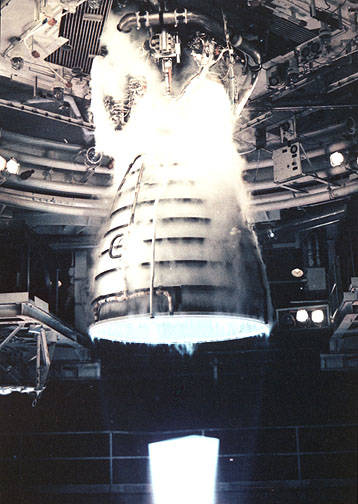
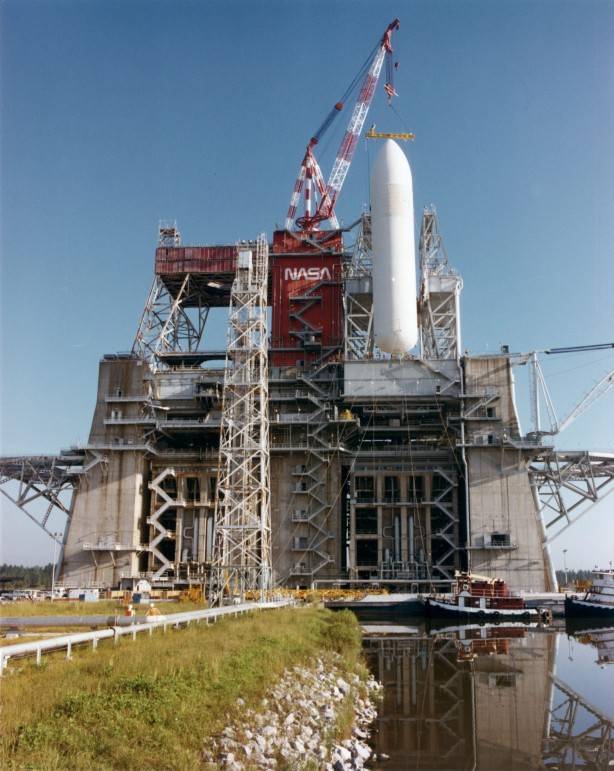
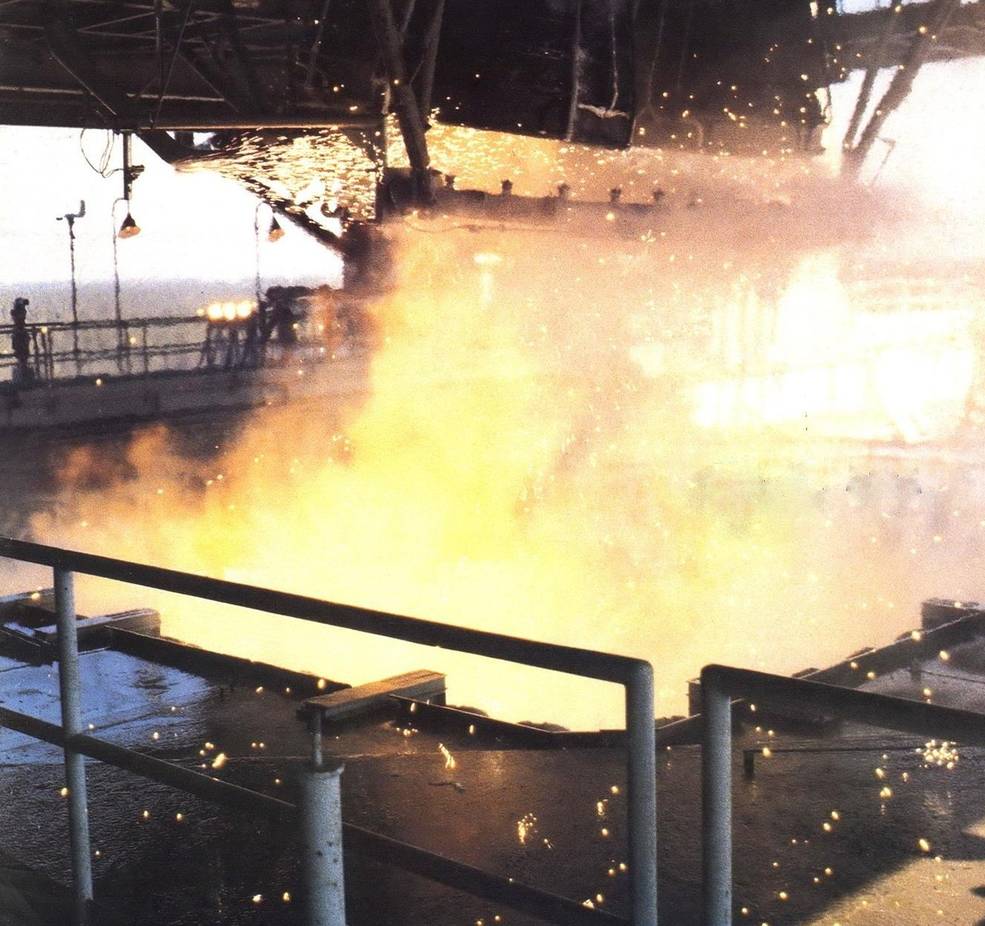
Left: Static test fire of a space shuttle main engine (SSME). Middle: A shuttle external tank is being lowered to join a shuttle aft fuselage and three SSMEs to form the Main Propulsion Test Article (MPTA) in test stand B-2. Right: Final certification test of three SSMEs using the MPTA, three months before STS-1, the first launch of space shuttle Columbia.
With the end of the space shuttle program in 2011, Stennis turned its attention to future exploration missions. On April 4, 2019, technicians completed testing all 16 former SSMEs, now called RS-25 engines, planned for use in the Space Launch System’s (SLS) core stage to power the Artemis program to send Orion capsules and eventually astronauts to the Moon. A second round of RS-25 testing, called the Green Run, began in January 2020 and culminated with a test in the B-2 stand involving four RS-25 engines mounted on the core stage of the SLS rocket destined to launch the Artemis I mission to the Moon. The first test on Jan. 16, 2021, ended after a little over one minute, but a second test on March 18 completed the full duration 500-second firing. Following the test, ground crews shipped the core stage to KSC to prepare for the Artemis I launch. Once again, the old saying is true, “If you want to go to the Moon, you first have to go through Hancock County, Mississippi.”
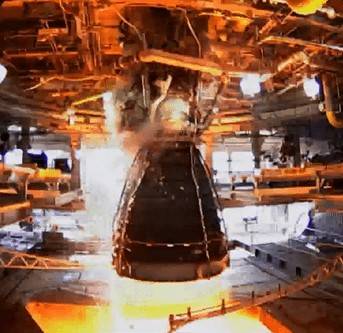
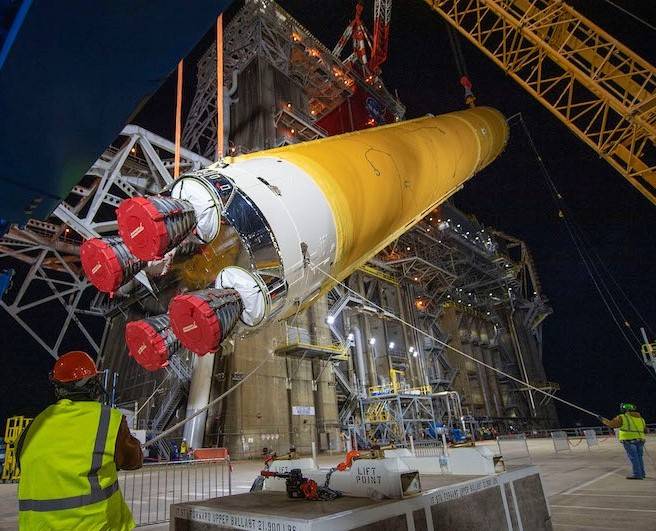
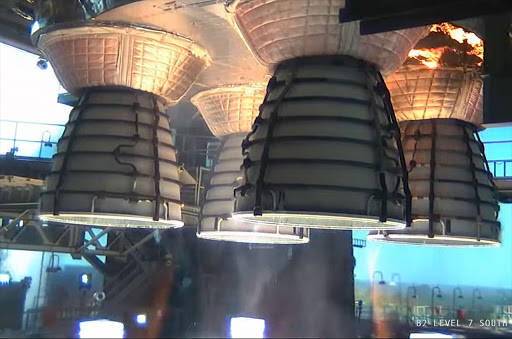
Left: Static test fire of a RS-25 engine for the Space Launch System (SLS) core stage. Middle: Ground crews mount the SLS core stage for the Artemis I mission in the B-2 test stand. Right: Full duration static fire of the SLS core stage’s four RS-25 engines.
To be continued…























